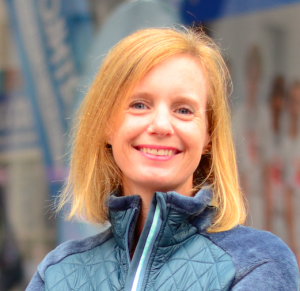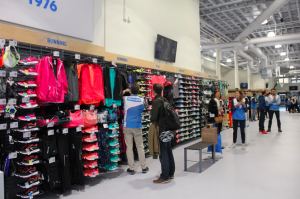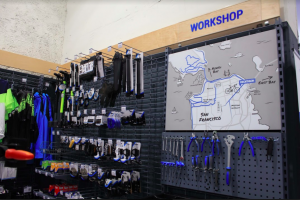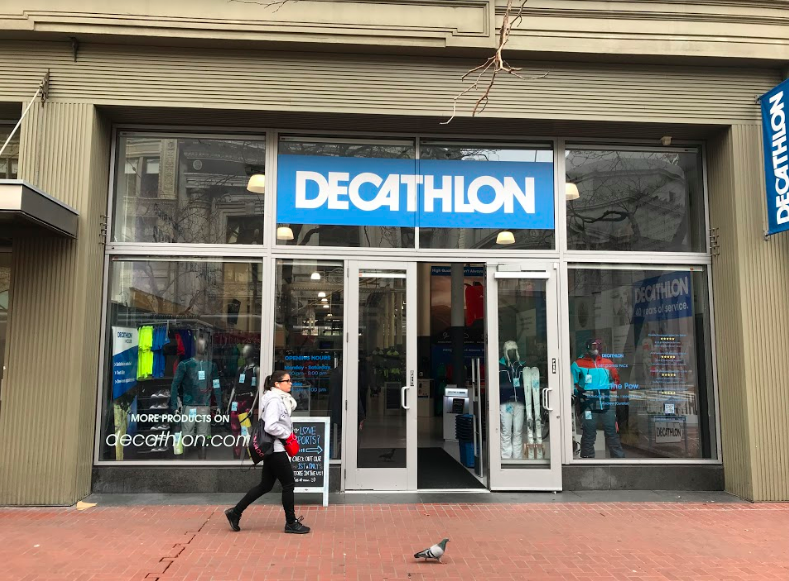 In December 2017, Decathlon, by far the world’s largest sporting goods retailer with over 1,350 stores across 32 countries, returned to U.S. retailing in a small way.
In December 2017, Decathlon, by far the world’s largest sporting goods retailer with over 1,350 stores across 32 countries, returned to U.S. retailing in a small way.
The French retailer opened one store at 735 Market Street in San Francisco in a location measuring only 8,313 square feet–well below the company’s average store size of around 32,000 square feet or the company’s mega-stores that run over 100,000 square feet.
Decathlon describes the location as a “lab store” that the company will use to become familiar with the practices of local sports fans before a possible expansion throughout the U.S. A U.S. e-commerce site was also launched that initially served California but has since expanded to the rest of the U.S.
The go-slow approach comes after Decathlon experienced a rocky time in the country’s first entry into the U.S. market in 1999, when the country bought the assets of MVP Sports Stores, a New England sporting goods chain with 20 locations. Those locations were rebranded to Decathlon but all were closed by 2006 due to underperformance.
“That was 20 years ago, and over those 20 years, Decathlon has evolved considerably,” said Sophie O’Kelly de Gallagh, COO of Decathlon USA, in an interview with SGB. “Our plan today is to really introduce Decathlon and our range of sports brands with our own experience. So it’s very, very different.”
Retailing has also changed dramatically over those two decades, and the store plays up a major omni-channel component as well as interactive try-before-you-buy features.
Here, O’Kelly discusses Decathlon’s return to the U.S., the retailer’s unique vertically-integrated model and expansion plans.
Why San Francisco? San Francisco for us is a very innovative and sports-oriented environment. We have outdoor sports, urban sports, cycling, swimming, watersports, etc. and those sports are all practiced here. So it’s really great to be able to get all this feedback from all these sports lovers here in San Francisco. And also it’s a very innovative environment. It’s a great place to source ideas, gain feedback and test a lot of different tools that enhance the customer experience both in store and online. This is called our lab store because we’re really testing and learning about how sports are practiced in San Francisco and gaining feedback.
Is this mainly an online strategy with a few stores, or do you plan to open many stores? For the moment we’re focusing on the Bay Area. The online strategy is very important, but what we’re more specifically focusing on is to have an omni-commerce strategy, and part of that is being able to order online from the store. So we have kiosks in the store where we have iPads and you can order product online. Of course, in the store we have in San Francisco, we don’t have all of our products that we display online because it’s a relatively small store. The idea is to show that we have one part of our range in the store and everything else is available online.
 Why a small store? We’re trying a new concept where, as I said with the omni commerce approach, we can actually display our product in the store and make sure everything is also available online. So the idea is for a user to come into the store to be able to see our products, touch our products, understand who we are, discover Decathlon and also have this alternative or this complementary way to be able to shop with us online. So that’s why the store was more adaptable to a city center store. But the whole concept was to be able to show that it’s not only what’s in the store, it’s the whole omni-commerce display we have online and in the store.
Why a small store? We’re trying a new concept where, as I said with the omni commerce approach, we can actually display our product in the store and make sure everything is also available online. So the idea is for a user to come into the store to be able to see our products, touch our products, understand who we are, discover Decathlon and also have this alternative or this complementary way to be able to shop with us online. So that’s why the store was more adaptable to a city center store. But the whole concept was to be able to show that it’s not only what’s in the store, it’s the whole omni-commerce display we have online and in the store.
How does Decathlon keep prices so low? We design our own products, and then we manufacture them in our network. So it’s completely integrated, and then we always try to find ways to pass all the savings we’re achieving upstream to consumers downstream. So basically we try to find ways of reducing our costs, for example, by using less water in our dyes, which is good for the environment and also reduces costs. Our product engineers will also find ways to use less material, for example, in our backpacks to reduce costs, but they make them durable and high-quality.
With all the focus on low pricing, do your consumers know that you also offer higher-end gear and apparel? Yes, they do. Everything is available online, and they can see that in the store as well. We have products available at different levels, from beginner to intermediate to expert. For example, we have some quality bikes available for $350, and then you can find full-carbons bikes that can start at $1,700.
 How are you getting the word out? We’re using social media in the San Francisco Bay Area, including our Facebook page. We are also working with communities hosting lots of events in the store. We have running events and have hosted yoga classes. We had events such as how to cycle at nighttime. One event included a hike that was organized with a group of people. We’ve also had some golfing and some tennis events. So that’s really the way we’re getting the word out and making sure our sports lovers actually understand who we are and what we have to offer, and that they give us their feedback.
How are you getting the word out? We’re using social media in the San Francisco Bay Area, including our Facebook page. We are also working with communities hosting lots of events in the store. We have running events and have hosted yoga classes. We had events such as how to cycle at nighttime. One event included a hike that was organized with a group of people. We’ve also had some golfing and some tennis events. So that’s really the way we’re getting the word out and making sure our sports lovers actually understand who we are and what we have to offer, and that they give us their feedback.
Are shoppers more impressed with the prices or quality? They’re actually excited about both. They discover we have our own branded product that’s exclusive, which is something that they think is really great because they can find all the sports under the same roof with great prices and great quality. They’re impressed by the fact that they can actually go into the different alcoves to check out all the different sports. We also have a click & collect concept where you can purchase online and then collect in the store. That’s something that’s working well. So they’re really responding really well, and we feel they find a nice surprise when they come in the store.
What’s next? What’s next is to continue testing, continuing to obtain feedback, continuing to engage with our communities, continue hosting these events to get a further understanding of the sports lovers in the Bay area. Of course, this is a small store, so you know at one point we’ll be thinking about how can we offer our wide range of product in a different type of store. But right now we’re really focusing on our test in the Market Street store.
Photos courtesy Decathlon
















